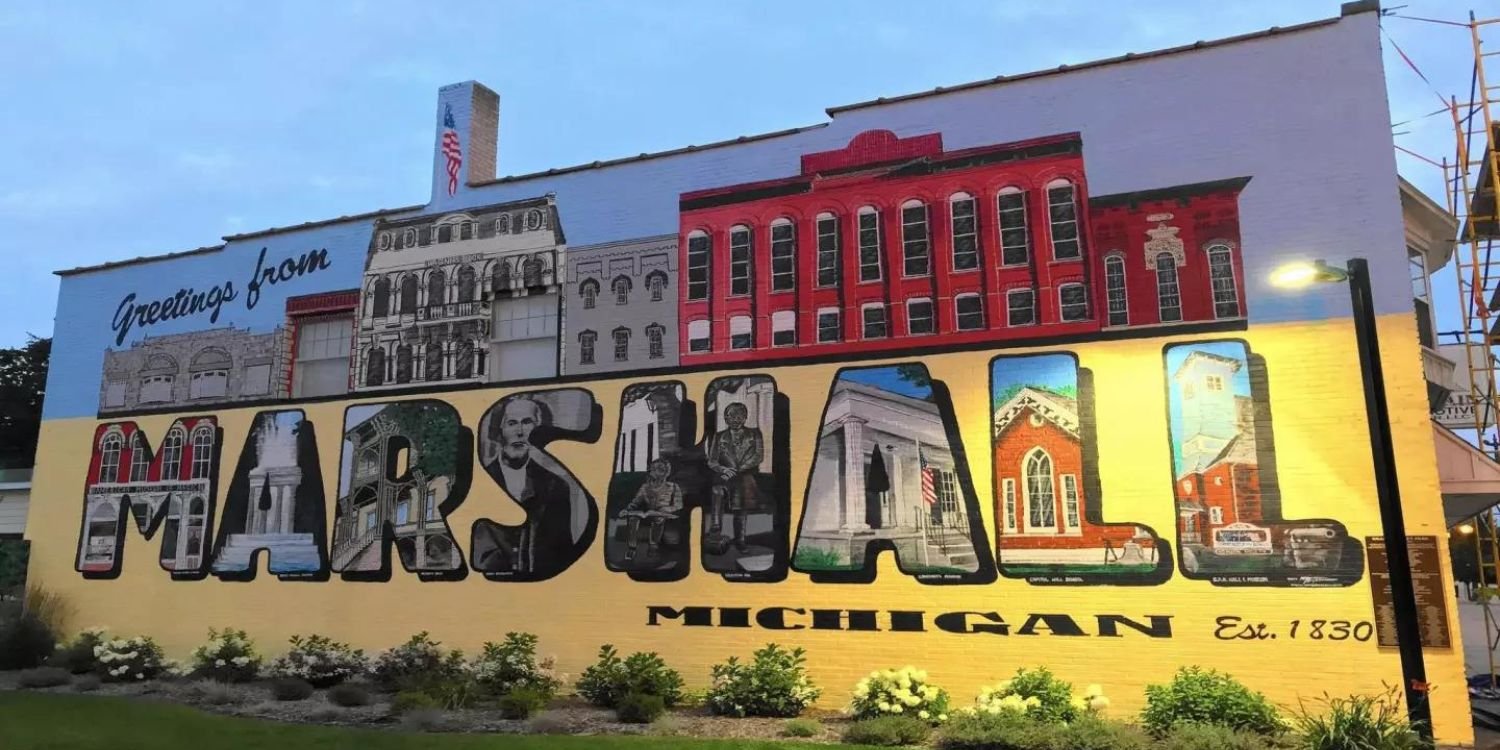- Press -
Marshall, Michigan 2019
Making Broadband Work in Marshall, Michigan
Marshall launched FiberNet, in partnership with Aspen, and the project has quickly expanded to cover the community with some of the best connectivity in the state.

Making Broadband Work in Marshall, Michigan
February 20, 2019
This is a guest post by Lisa Gonzalez, senior telecommunications researcher at The Institute for Local Self-Reliance.
Marshall is home to about 7,000 people in south-central Michigan and is the seat of Calhoun County; the town is full of history. When it was time for Michigan to select its state capital, Marshall was considered a shoe-in. In fact, they were so confident they’d be chosen, community leaders built a Governor’s Mansion, but Lansing was ultimately selected by one vote. The town’s historic district is considered one of the most architecturally significant in the U.S.
Before Marshall invested in a publicly owned Fiber-to-the-Home (FTTH) network, the town’s ambiance of historical significance also applied to the town’s Internet access. However, in 2018, the town launched FiberNet and the project has quickly expanded to cover the community with some of the best connectivity in the state.
From Idea to Inception
In 2015, community leaders decided that it was time to address one of the issues they felt prevented Marshall from realizing its greatest potential: poor internet access. City council members wanted to ensure that Marshall remained competitive, which required better connectivity for both residents and businesses. DSL from AT&T served much of the town and a few areas could sign up for WOW cable internet access, but there were still households that had to make do with dial-up connections. Poor connectivity was one of the issues that city council members noted their constituents often complained about.
People living in Marshall typically experienced 2 Mbps download and much slower upload speeds. Community leaders recognized that the status quo was becoming inadequate for businesses and the changing internet uses of most families. Homework, telehealth, and home-based businesses weren’t possible at such slow speeds and Marshall wanted to remain competitive. For many brick-and-mortar businesses in Marshall, services were unreliable and slow, and peak usage times were especially difficult for online commerce.
Asking Around
Michigan requires municipalities to issue a request for proposals (RFP) in order to seek bids from the private sector before investing in a publicly owned network. A town or city can only develop a municipal network if they receive fewer than three bids and, once they decide to invest in the network, the municipality must follow the terms of the RFP.
Marshall didn’t receive any responses to the RFP they issued, indicating that private sector providers didn’t find the potential profit worthwhile when considering the required investment in Marshall. After meeting the legal requirement, the town was free to pursue its publicly owned network.
Internet for the People
The town has owned and operated a municipal electric utility since 1893. Often, communities that deploy FTTH networks begin their journey by using fiber to serve the purposes of their municipal electric utilities. Improving communications between substations or enhancing electric service with smart grid technology can be the catalyst that brings FTTH to businesses and residences.
In Marshall, however, community leaders’ focus has always been on better connectivity for residents and businesses. The electric utility assisted in developing the network, but the electric utility and the broadband utility have always been completely separate. Marshall’s electric department has provided advice, and an engineer transferred from the electric utility to FiberNet, but the utilities do not overlap. While the town is looking into fiber for the electric utility, FiberNet isn’t serving that purpose.
Marshall began connecting subscribers to FiberNet near the end of 2017 and has almost completed aerial and underground deployment, with only two streets left for spring construction. As part of their deployment strategy, Marshall has prioritized areas of the town with the highest population and strongest level of interest. They also own a plow, which has helped lower the price tag for construction.
Deployment has cost about $2.5 million and the town anticipates operation and maintenance will run approximately $1 million per year. Interdepartmental loans and the community’s Local Development Financing Authority (LDFA) have funded the construction of FiberNet. LDFA funds are generated from tax increment financing or through other instruments, including revenue bonds.
Healthy Demand
With a brisk demand for services, the town intends to pay off-network deployment loans within five years. To meet that goal, they need a 38 percent take rate, which they appear to be on track to meet. Since March 2018, FiberNet has connected 20 percent of premises passed and continues to hook-up new subscribers every day. As businesses and residents complete contracts for AT&T’s DSL service, they reach out to the city asking to be connected to FiberNet.
When Marshall first began investigating a community broadband network, the town leadership sought simple pricing that didn’t include hidden fees, high installation costs, and/or pricing gimmicks that subscribers would have to decode. Rates are symmetrical and subscribers pay no installation fees. Community leaders in Marshall wanted to encourage subscribers to be part of the online economy, not to only fill the role of consumer. Residents can choose from four tiers that range from $40 per month for 50 Mbps to 1 gig at $200 per month.
Marshall has been attracting new businesses in recent years and FiberNet is helping to keep the momentum going; when new businesses come to town, they typically request the service. Municipal facilities pay the same rates as commercial subscribers, and now they pay about half for fiber connectivity than what they used to pay for cable connections, but with improved reliability. Past connections to incumbent providers were around $300 per month per facility with slower upload speeds; now each facility pays $150 per month under the FiberNet commercial tier 2 plan, which offers 150 Mbps symmetrical services.
Meeting Challenges and Making Adjustments
Like every endeavor, the FiberNet project has uncovered some challenges that the city is facing to bring the best service possible to the people in Marshall.
The city has determined that they need to look into offering a lower-cost service, because not all subscribers want the level of service that FiberNet offers, even at $40 per month. Some of the small businesses don’t take the service because they only use Internet access for one or two tasks, such as credit card processing; paying more for FiberNet doesn’t fit in with their business needs. Similarly, some residents use internet access sparingly — for email or social media — and keeping internet access costs as low as possible is more important than having superior service.
Marshall’s municipal broadband utility is in business to bring better connectivity to the town’s residents, businesses, and public facilities, while also being cost-neutral. With that in mind, FiberNet leaders are examining ways to bring a lower-cost option to the community. Marshall’s approach to customer service — give the subscriber what they want — may align with their quaint, historic atmosphere, but this town’s internet access is now state-of-the-art.
About the Author: Lisa Gonzalez is a senior telecommunications researcher at the Institute for Local Self-Reliance’s Community Broadband Networks Initiative, and serves as writer and editor at Muninetworks.org.
Aspen Smart Networks is empowering the future of communities.
We're committed to helping every community benefit from the transformative power of smart network solutions that enable municipalities, counties, and regional governments succeed at scale. Get help finding the best ways for your network to work together and power the future of your business.



